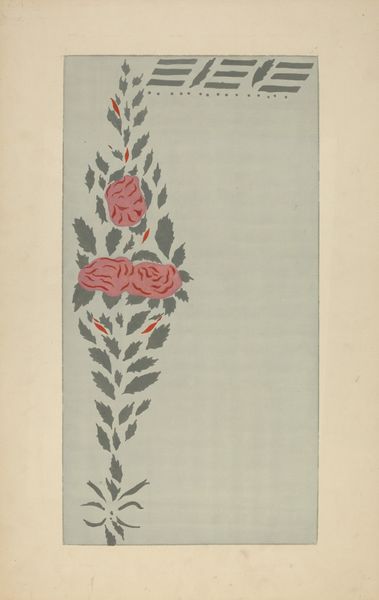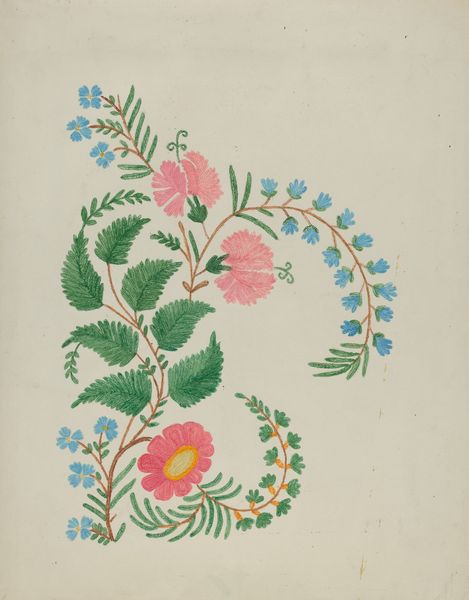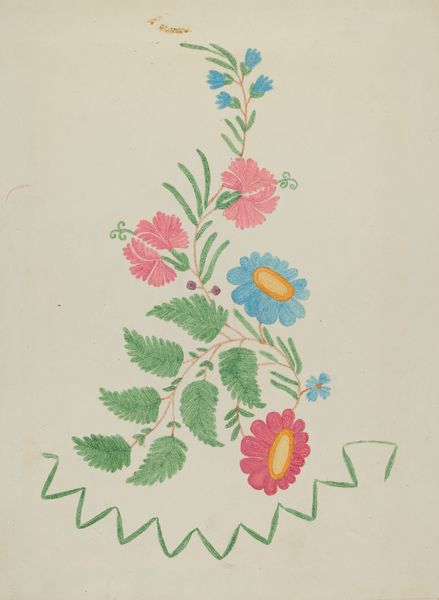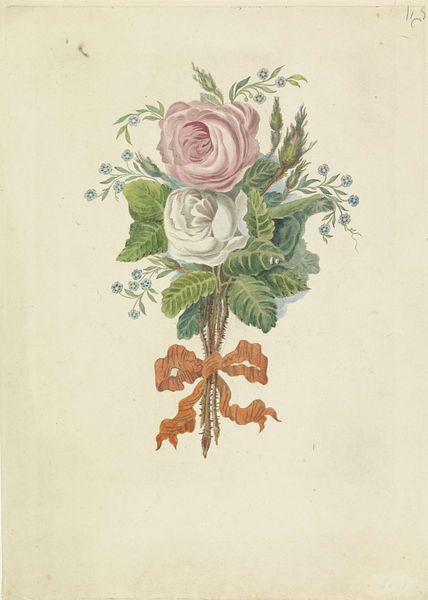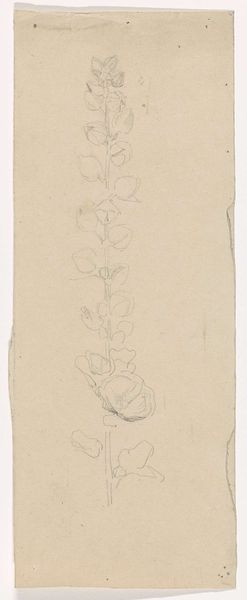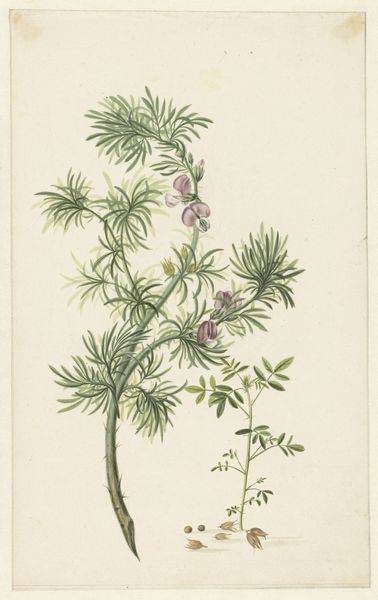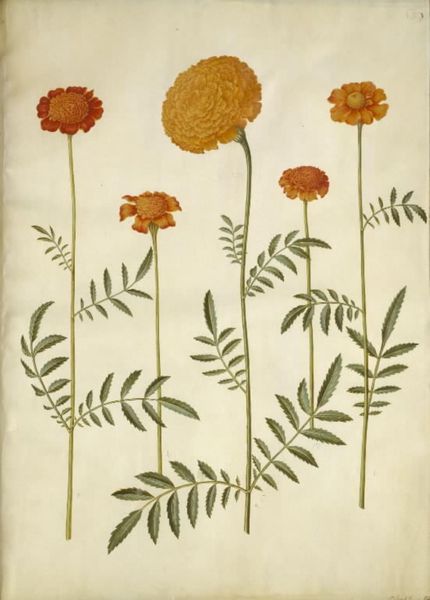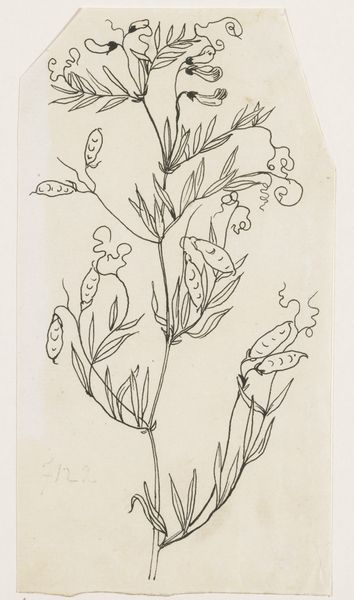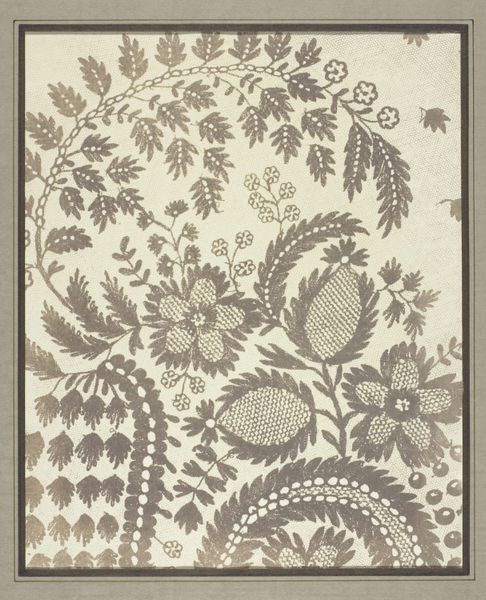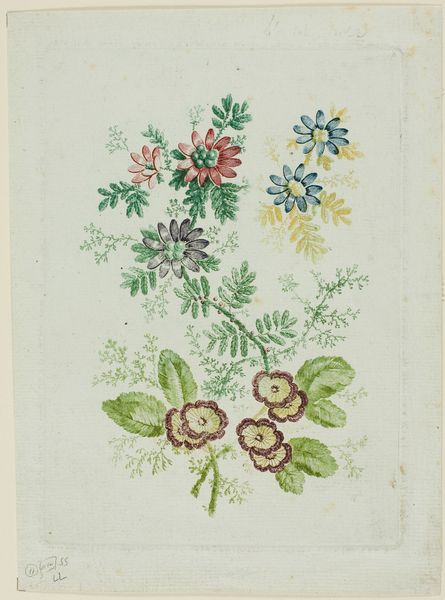
painting, print, watercolor
#
water colours
#
painting
# print
#
watercolor
Copyright: National Gallery of Art: CC0 1.0
Curator: This delicate watercolor print from 1936 is entitled “Yewtwig,” created by Ludwig Mestler. It's quite simple in its composition: just a single sprig against a pale background. What strikes you about it? Editor: Well, the immediate feeling is one of quiet contemplation. There’s a peacefulness in its simplicity, but also a slight melancholic air, almost like a faded memory pressed in a book. Is that strange? Curator: Not at all. Yew trees, of course, have incredibly long lifespans. They were often planted in cemeteries, so they have long-standing associations with mourning, resilience, and even immortality. Editor: Aha! That's precisely the symbolic thread I was groping for! The single red berry against the evergreen needles feels incredibly poignant, almost like a spark of life amidst…well, enduring history. Did Mestler lean into these associations consciously, do you think? Curator: I think it’s impossible to say for certain, but I’m compelled by his careful rendering. He obviously appreciated the detail of the tree—the delicate arrangement of the needles, the almost luminous quality of the berry. Editor: It's funny how a simple plant becomes a profound emblem through layers of meaning. A seemingly simple depiction holds a world of symbolism – cycles of death, remembrance, regeneration…all things a culture would recognize through shared experience. Curator: Precisely. And watercolor lends itself beautifully to conveying those ephemeral qualities, that feeling of things fading yet still holding onto a kind of quiet, resilient beauty. Editor: Absolutely. This little sprig has staying power—as a reminder, as a piece of art. Thanks for that reflection. Curator: My pleasure! It’s remarkable what depth a single, seemingly straightforward image can possess, isn't it?
Comments
No comments
Be the first to comment and join the conversation on the ultimate creative platform.
